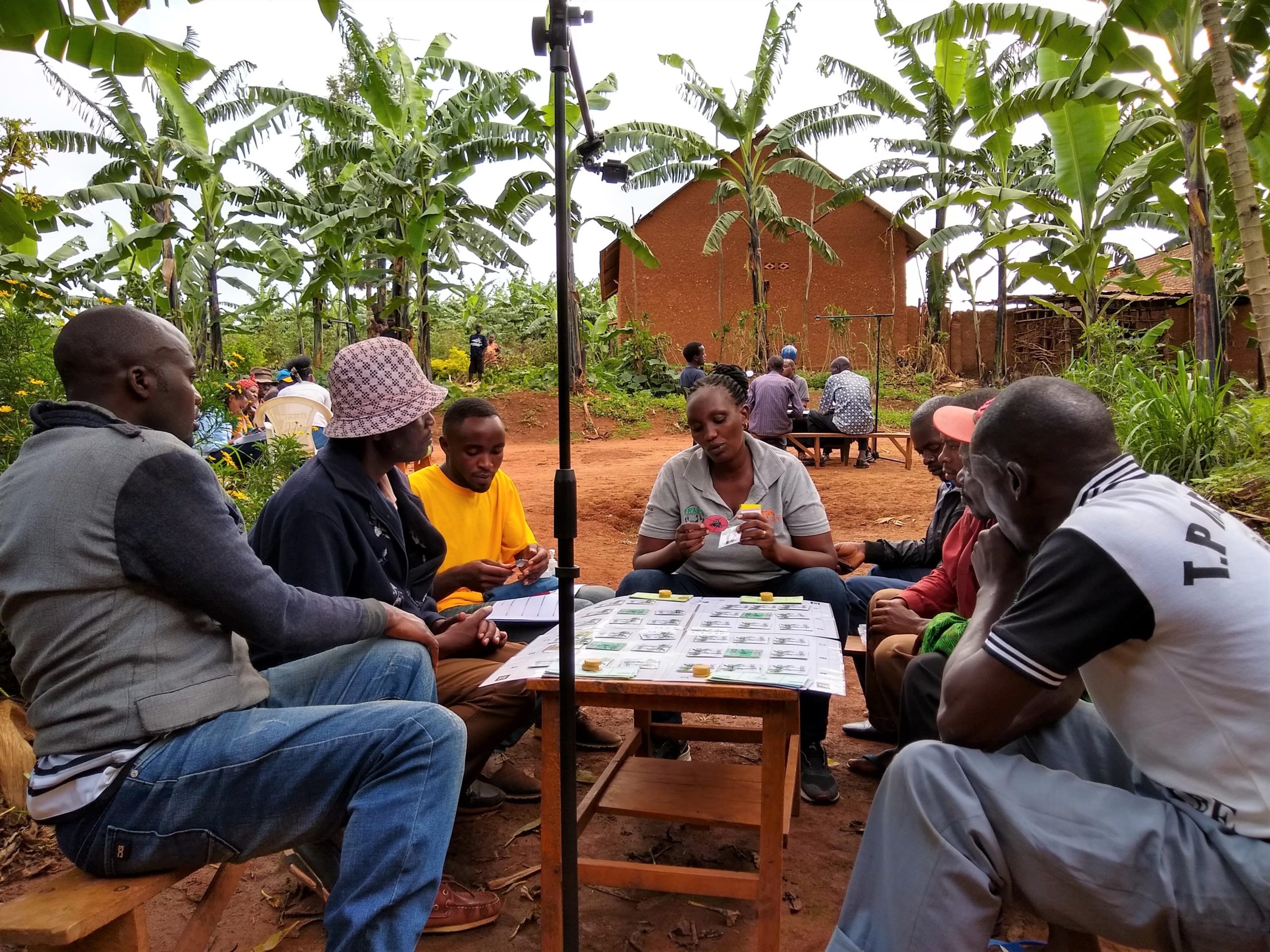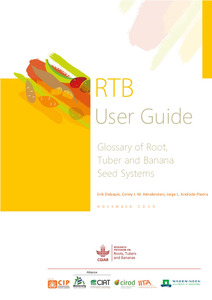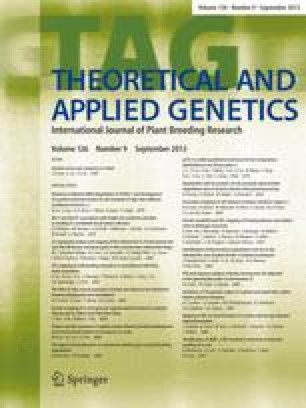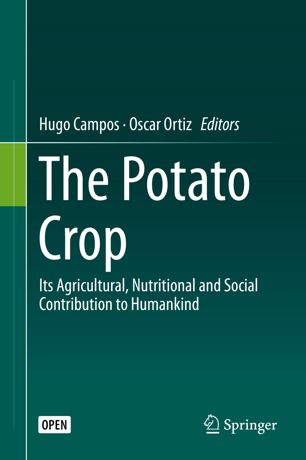Farmers are playing specially designed games intended to give them insights into the collective management of crop diseases — protecting their harvests and improving food security.
Bananas in East Africa and potatoes in Ethiopia are staple crops that, in their different ways, pose similar problems for farmers. They are subject to diseases that can spread insidiously and devastate harvests and livelihoods. New approaches based on concepts from the behavioral and economic sciences, pioneered by Ph.D. students and supported by the CGIAR Research Program on Roots, Tubers and Bananas (RTB), are beginning to improve management of the diseases.
For potatoes, which suffer from late blight and bacterial wilt, and for Xanthomonas bacterial wilt in bananas, management advice in the past was often directed at the individual farmer. This, however, neglects the role of the wider community and the wider environment. Bacterial wilt in both crops is difficult to control because it can spread invisibly as a latent infection in seed potatoes or banana planting material. It also spreads through irrigation water, surface run-off, contaminated farm tools, and on farmers’ shoes. Farmers might not appreciate all the potential routes to infection, or that the whole community needs to act together. One result is that when bacterial wilt erupts in a community, farmers, extension workers and researchers all blame one another for what are failings in a larger system.
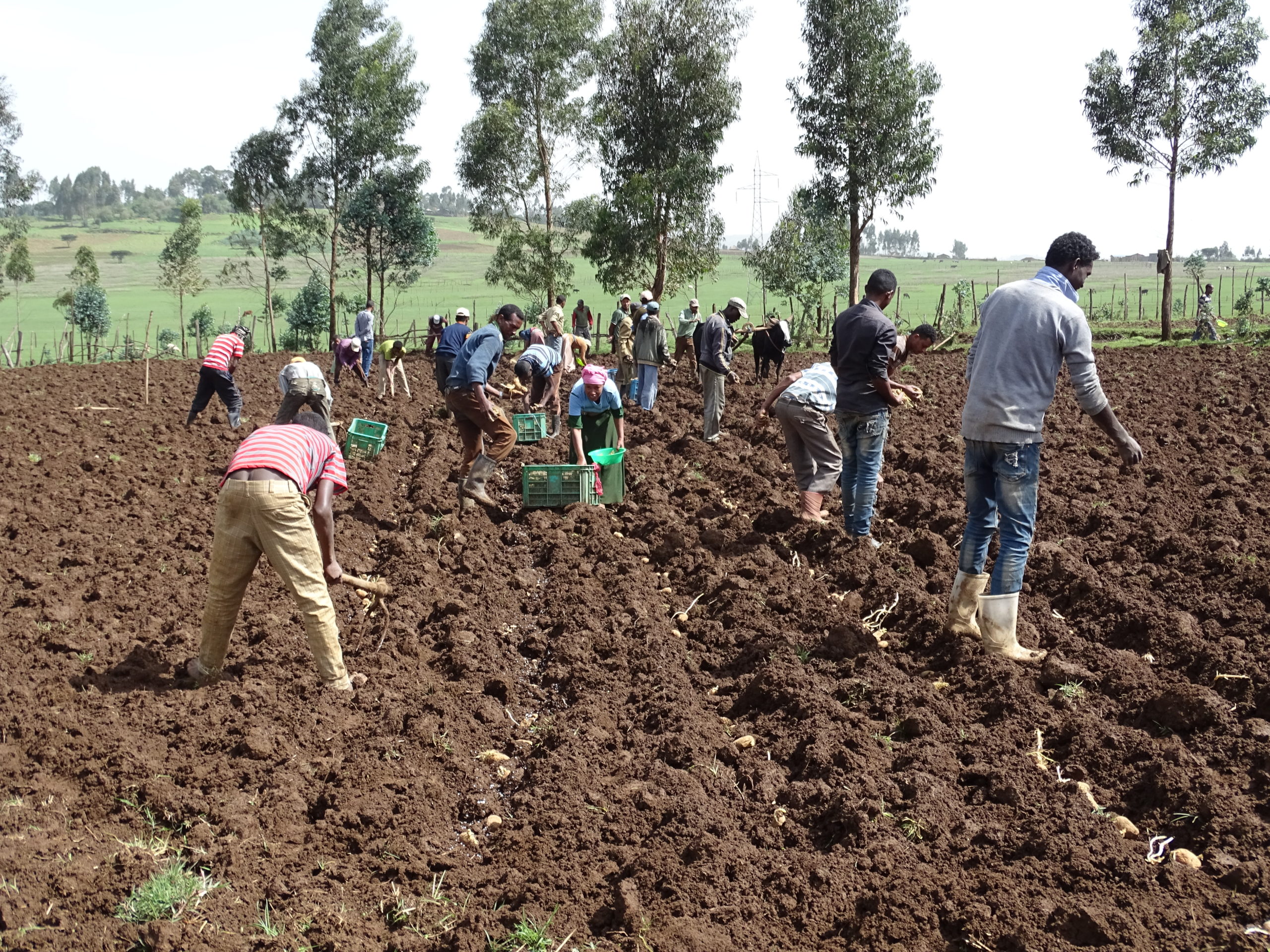
Participant Farmers planting potato on their learning plot aimed at improving technical disease management practices. Photo credit: Shiferaw Tafesse/WUR
It takes a village
Based on their earlier study, Elias Damtew and Shiferaw Tafesse, Ph.D. candidates at Wageningen University & Research (WUR) in the Netherlands, devised and implemented innovative training to foster a simultaneous change in the social and technical practices of farmers in two villages in their native Ethiopia.
“The efforts of an individual farmer alone cannot be effective in dealing with diseases unless other farmers in the same community or village make concerted efforts,” they said in a preliminary report.
During the training, potato farmers who grow ware potatoes for eating met the seed potato farmers whose goal is to supply healthy planting material. Each party came to appreciate their interdependence; if the ware farmer’s crops fail, the seed farmer has no market. Without seed farmers, the risk of disease is much greater for ware producers. Learning about the pathogen and how it spreads also allowed farmers to identify potential infection routes in their own village and how to manage them.
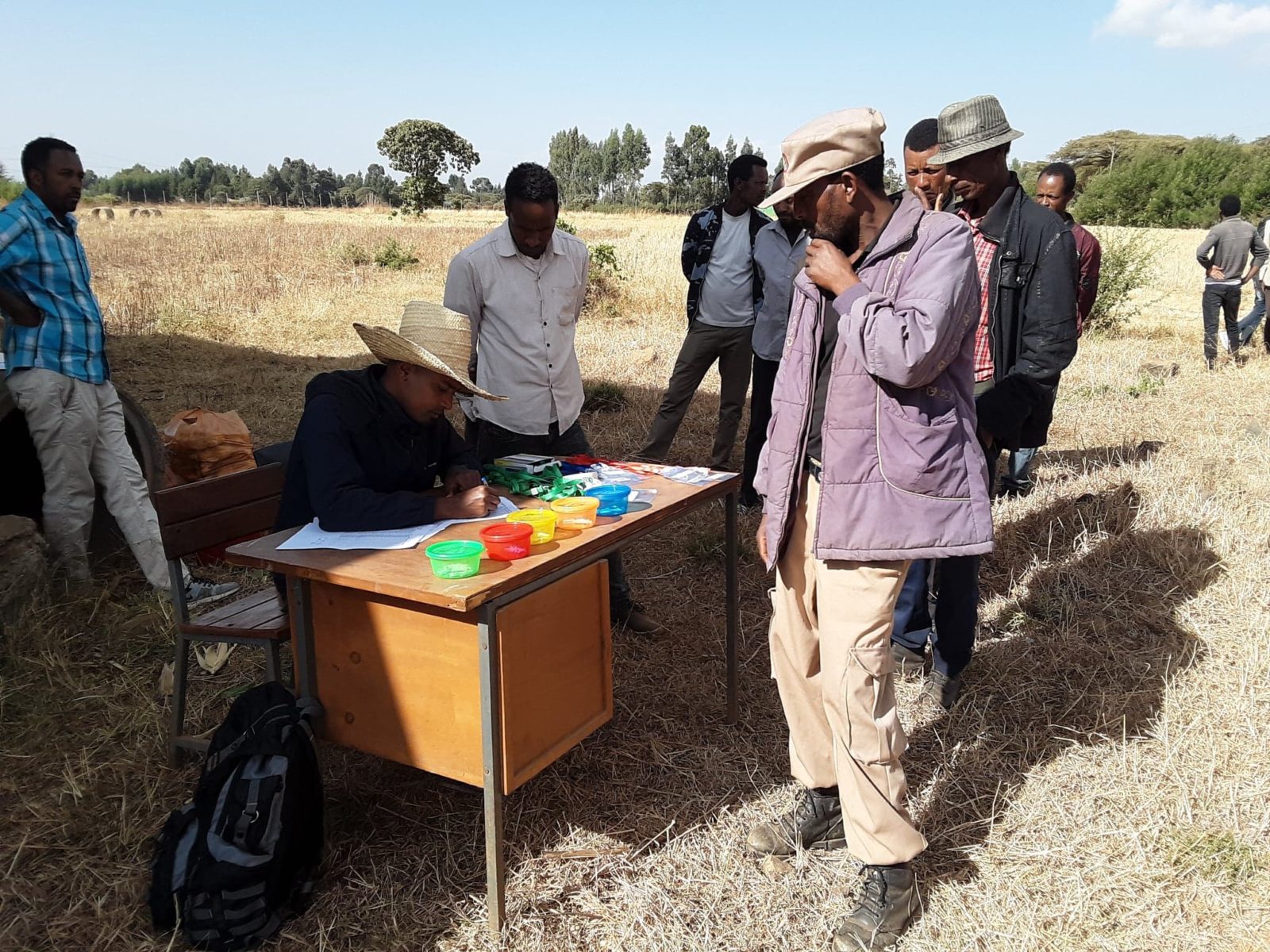
Potato growing farmers being assigned into the different game treatments in one of the many experimental villages in Ethiopia. Photo credit: Shiferaw Tafesse/WUR
Communication improves community
Late blight spreads on the wind, extremely rapidly. Its propensity to traverse farm boundaries means that control efforts by any farmer confer a benefit to other nearby farmers. It also means that a lack of control by any farmer stimulates the development of the epidemic and thus imposes costs or losses on other farmers. It requires a concerted action if it is not to overwhelm a community, and that requires good communication. Damtew and Tafesse came up with a game they played with farmers to see how different types of communication in various combinations affected the decisions farmers made to manage the disease.
Giving the farmers technical information about disease management and telling them what their neighbours were doing did not improve collective action. However, when the game introduced a phone-based platform that allowed farmers to communicate with one another about their own disease management efforts, collective management did improve. Farmers adjusted their own practices based on what others were doing, and put pressure on free riders who were not taking any action to control the disease. The smartphone platform allowed the farmers to make better use of information from advisory and monitoring services. It also helped to cement community relationships.
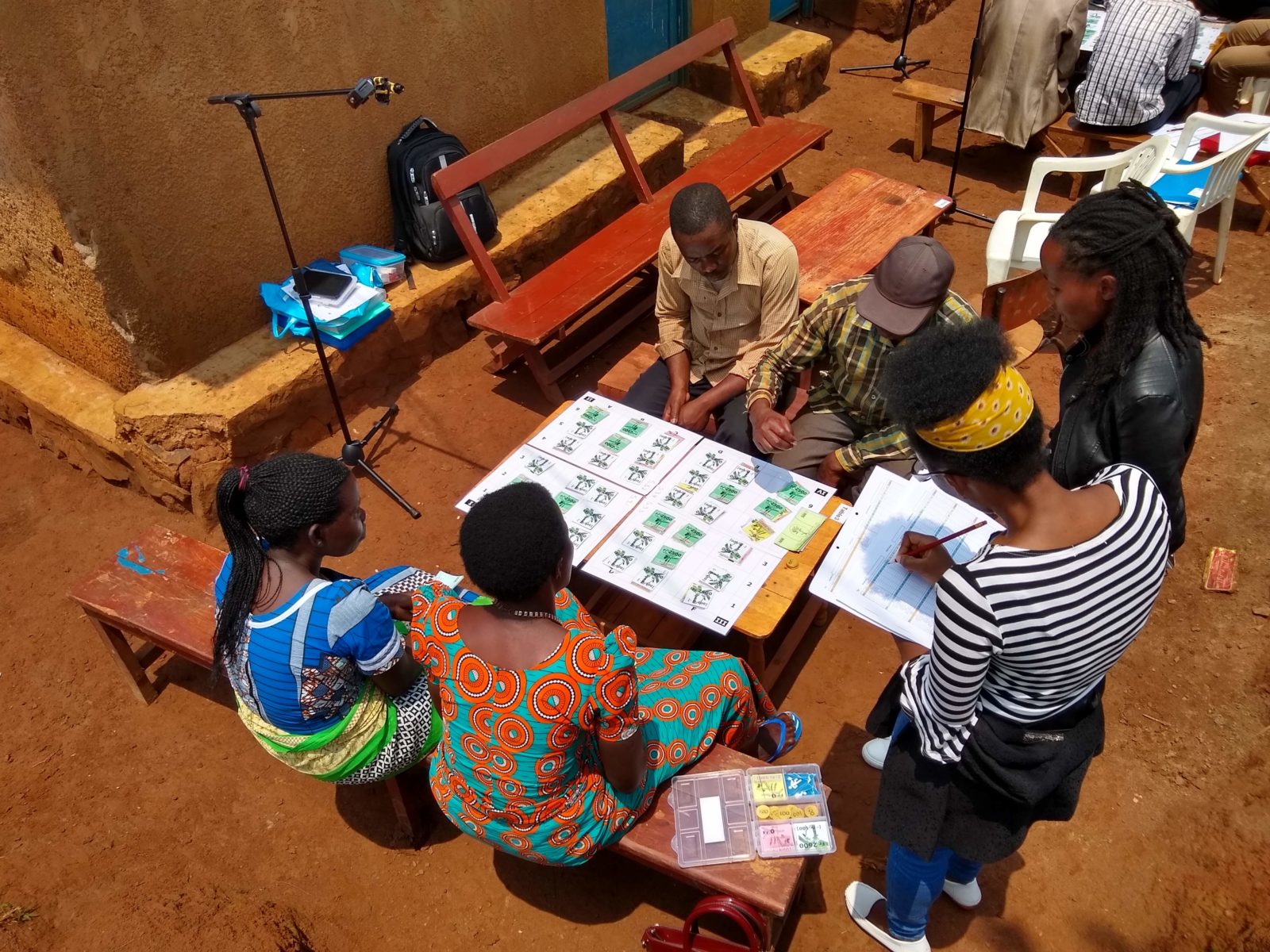
Field experimental games are suitable for many different settings. Data collection is done with tablets, video cameras, and paper registration sheets. The game in Rwanda is designed to study banana disease and adapted to the local context, but the same method could be used to learn about other complex problems in RTB crops. Photo credit: Mariette McCampbell/WUR
Game for learning
A similar sort of study, to improve the management of banana Xanthomonas wilt (BXW), started in March in Rwanda, where banana is an important staple and cash crop. BXW spreads from mat to mat primarily by insects and contaminated tools, as well as infected planting material. As with late blight, collective action is more effective for controlling the disease.
Mariette McCampbell and Julissa Galarza Villamar, also Ph.D. candidates at WUR, developed an experimental board game that is played by four farmers at a time. During the game, farmers have to make decisions to prevent and control BXW, which brings out the kinds of dilemmas they have to deal with. Communication among the farmers is one factor being investigated, and the game itself is sandwiched between a pre-game survey and a post-game group interview to draw out the farmers’ reflections not just on the game but on BXW and the need for collective action.
The Covid-19 pandemic measures forced the field team to halt activities before completion. While waiting for restrictions to be relaxed, Mariette and Julissa are focusing on analysis of the rich qualitative data they already have. Their preliminary observations from this are already revealing a promising side effect of playing games with farmers.
“Farmers told us that not only do they enjoy participating in this type of research method, but also they learn much about banana production and the importance of collaborating when they’re fighting a public bad like BXW,” McCampbell and Galarza Villamar noted in a preliminary report.
Challenges remain
In banana and potato, research on disease management in the past has tended to focus on biophysical and technical aspects. Those are certainly necessary, but they are not sufficient. Challenges remain in socio-cultural, economic, institutional, and political domains that affect the ability to control diseases at all levels, from national governments to farmers in a village.
This preliminary research shows that by making use of information technology and tailored forms of learning, farmers can gain the insights needed to manage these threats to their livelihoods more effectively. When working together as a community by sharing information, everyone wins.
